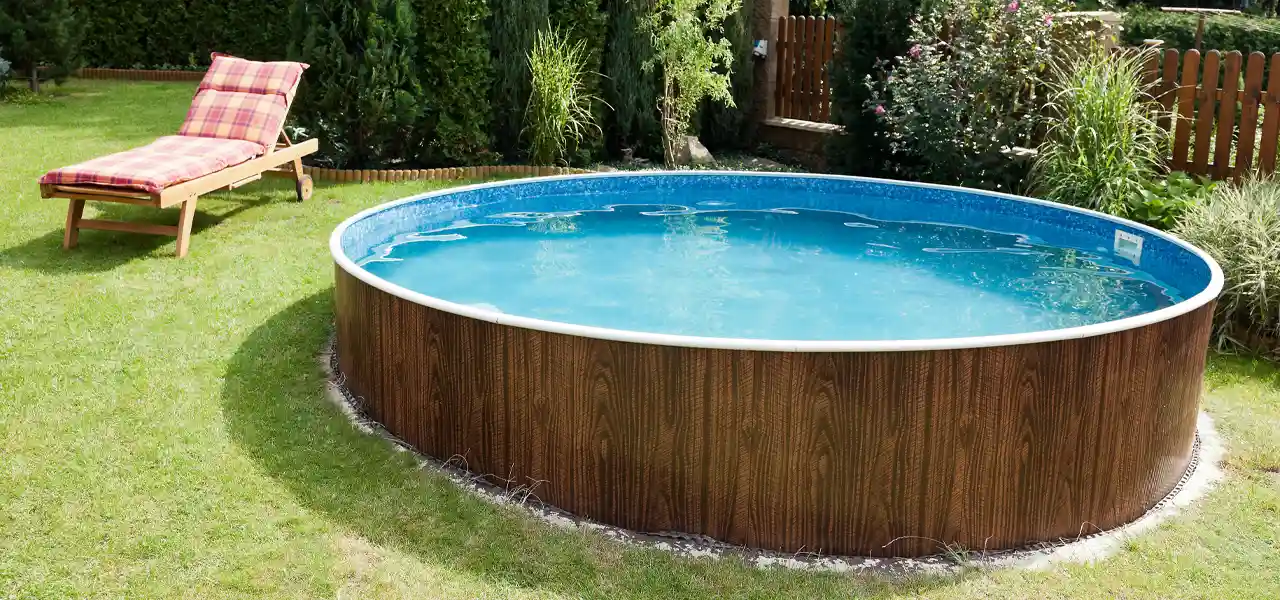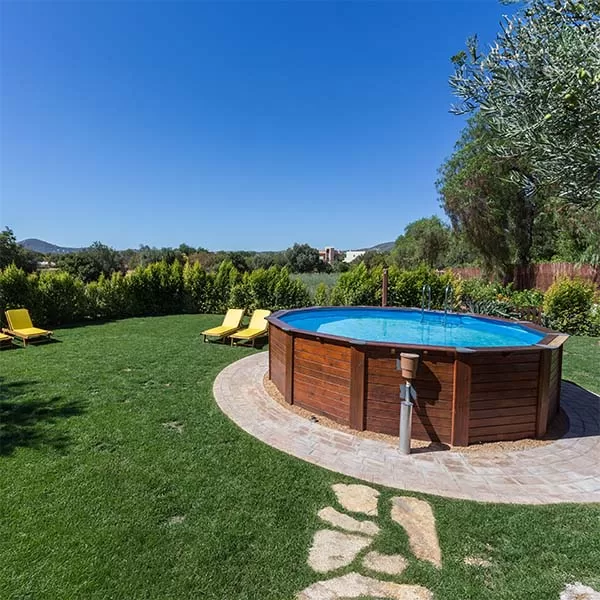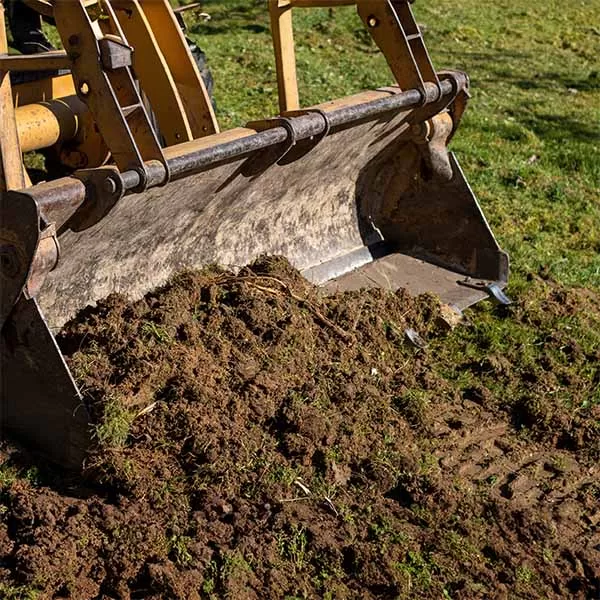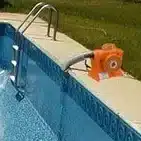FREE Standard Shipping On All Orders $100 or More!*

Above Ground Pool Installation Guide
Installing an above ground pool is an easy weekend project for 2-3 people. Why pay some company more than the cost of the pool to install your above ground pool? If you work out their hourly rate, you’re being charged over $300 per hour for above ground pool installers. Do it yourself and install your own pool!
With just 1-2 helpers, and some simple hand tools and a drill, you can have an above ground pool installed and filling with water from the hose in 1 day. If you have a sloping hillside or drainage issues or are sinking a pool into the ground, it’ll take 2 days of work. One day to cut and grade the earth, and the following day for pool assembly.
Location is Everything

Choosing the best location for your pool is an important decision, they are very difficult to move later! A spot that is flat and close to level, will be easiest to prepare, but for many homes, the best location is a sloping hillside. In this case, they cut into the hillside, and build a retaining wall of block or timber, giving at least 10 feet from the pool walls to the start of the slope.
- Close to water, a garden hose that you can use to fill the pool.
- Close to power, a grounded GFI outlet, to plug in the pump.
- Close to house, or at least visible from the house.
- Close to Setbacks or Easements, but not encroaching.
- Sunny location, without overhanging or nearby trees.
- Good drainage, around and away from the pool.
Installing an above ground swimming pool is easier than you think. A weekend project for you, but a great savings for your wallet. Let's go with a 24 ft round pool, for example.
One Week Before:
Call811 before doing any digging on your property. A phone call to #811 will schedule a technician to come to your home and mark the property for underground utilities. It’s the law, even if your yard is very flat and you do not plan to dig deeply.
To start your above ground pool installation, place a stake in the center of the ground where you want the pool to be installed. Slip the end of the tape measure over the stake and measure to 13 ft. Measuring 13 ft from the center gives a diameter of 26 ft - so you will have 1 ft all around to work with. Walking slowly around the perimeter, use spray paint or lime to mark the outer perimeter of the circle. Remove all the grass and uneven top soil with flat shovels or spades, within the circle. You can rent a Sod-Cutter if you want to re-use the sod in another place; but what a beast to operate!
Once the rough stuff is removed, it's time to level out the area. A most important step! This can either be done with a site level, transit or line level. Set bricks flatly into the dirt on each side of the pool area, to an equally placed brick on the other side. Do this at several spots around the pool perimeter, to ensure that the surface is level. If you don't have access to these fancy tools, you can lay 8ft 2x4's across the area you just cleaned and leveled to "check level" with a carpenter's lever.
Important:
Any slope to the ground, even a centimeter of difference from side to side, will cause your water level in the pool to be uneven. If it's more than a slight difference, an above ground pool with uneven water level can have uneven pressure on the walls located on the high side of the pool.
Ground Leveling:

Now comes the real work. If you have a sloping location or hillside to contend with, you may need to use a skid steer loader or otherwise get some mechanical help. If the ground is fairly flat, the work can be done with picks and shovels. A flat and square nosed shovel is a good tool to shave off high spots.
To check for level, use an 8′ long 2×4, with a carpenter’s level taped to the wood. Move the 2×4 around the circumference of the pool, keeping one end in the center, and moving it on the outside. Work each “slice of the pie”, leveling the ground and then moving forward, until you’ve gone all the way around. It’s also helpful to set up your center stake again, with the string attached to another stake outside of the pool perimeter. The check for equal measurement from the string to the ground. Work the area until the ground under the string is level all the way to the edge, then move the string a few feet and repeat.
After the pool floor area has been leveled, bring into the middle of the pool area your floor material - whether it will be sand, stone dust or vermiculite. Start to assemble the Bottom Track connectors to make your 24' round circle. Go back around and check to make sure it is the same diameter all around and not 23'6" one way and 24'6" the other way. Some 24 ft round pools do not necessarily measure exactly 24 ft. Some may be slightly smaller or larger, just make sure that it's not slightly oblong, but has been laid out in a perfect circle.
Set Blocks in Place:
First, place a few stakes behind the assembled rail into the ground to prevent it from moving, while you continue to work. After the circle is round, dig down an inch, and place a 8" x 16" patio block under each rail connector. Patio blocks look like flat cinder blocks, only 1.5" thick; you can get them at any home store. The blocks should be set into the ground, even with the surrounding ground, so you don't raise the bottom rail up and off the ground. The bottom rail must sit on solid ground all the way around, and on the patio blocks at each connection. Proceed to level the rail going from 1 block to the next.
Tamping & Wetting:
If the soil is loose, hand tamping it, or using a motorized tamper is a good idea. The pool will weigh from 50-110,000 lbs. when full of water, so be sure that your soil is packed, or the pool will do it for you, but possibly unevenly. Use water from a lawn sprinkler to saturate the area and help loose dirt settle into place.
Pool Floor/Base:
To protect the pool liner, it is recommended to top your bare soil with sand or other smooth, compactable material. Two inches of sand makes a nice base for an above ground pool; it’s cheap, readily available and soft to the touch. Problem is, it’s too soft, and over time, heel marks and other floor irregularities will begin to show up. Stone dust is better than sand, as it lays flatter and resists shifting. A base of vermiculite or a sand/concrete mix can also be used, for the most durable and hard floor material. To spread the material level, use the stakes and strings again, as well as a carpenter’s level taped to an 8′ 2×4.
Smooth out your base material with large trowels or wooden floats and then tamp the floor with a heavy tamper tool. Next, use a push broom and gently sweep the pool floor, this is to remove the tamping marks and to ensure a smooth and level bottom. After tamping and smoothing, spray a light mist all over the pool bottom to solidify and firm up the floor. If you are installing a floor pad, to protect the liner, and provide a smooth pool bottom which is resistant to heel divots and markings, now is the time to install either floor padding or liner guard.
Connect Bottom Rail:
The bottom rail is a track that holds the pool wall and the uprights in a locked position. The bottom rail pieces connect end to end where they meet up at each connector plate, which also serves as the base plate for the upright posts between each wall. Once you have all of the rails locked into place, take several cross measurements, to be sure that the pool is perfectly round, or oval. You may wish to also check level again, by running strings across the pool, from base plate to base plate. Pull the string tightly, and hold a carpenter’s level at the level of the string. You can also use a transit, or shoot a laser beam from a patio paver, across the pool to the opposite paver. Check for level on each patio block before shooting the laser across the pool. The pool base or floor should come up to the top of each patio block that you place to support each upright.
Roll Out Pool Wall:
The pool wall material is a solid sheet of galvanized and laminated steel, rolled up tightly. Installing the pool wall involves unrolling it while simultaneously pushing the bottom of the wall into the bottom rail or track. You will need 2 helpers for this stage, to help stabilize the wall and hold it into the track, while you unroll the wall. Use a piece of cardboard underneath the roll, to prevent divots in the floor, and to keep from damaging the base of the wall while you move it around.
The skimmer cut-out is normally close to the beginning of the roll, so start at the place where you want the skimmer to be, which is also where your pump and filter will be located. After just 3-5 minutes, you’ll have the wall standing up in the track, use the bolts to connect both ends together, being sure that the smooth carriage bolt ends are on the inside, with the nuts on the outside of the pool wall.
Install Uprights, Stabilizers, and Top Rail:
Secure the upright by snapping it over the base plate on the outside of the wall. Position the stabilizer plate on the top of the upright, and screw into the upright. Now position the top rail on the top edge of the wall, and screw into place at the uprights.
Install Foam if Desired:
Foam on the walls gives a nice soft touch and helps protect the liner. Same goes for floor padding that you can place underneath the liner. We have foam pool cove that is used to make a smooth and even transition between pool wall and floor, and helps protect the liner from overstretching in this area.
Install Vinyl Pool Liner:
With 2-3 helpers, drape the pool liner over the pool walls and clamp it in place with the coping strips. For beaded liners, attach the bead receiver to the top of the pool wall and snap the liner edge into the track.
Place the pool liner box inside the pool and unfold it. If the weather is cold, keep the liner stored indoors until ready to use, to make the vinyl more pliable. Put the seam around the bottom perimeter half way up the cove. Hang the liner over the wall (assuming that it's an overlap liner) and secure the liner to the top of the wall with the included coping clips. Have someone on the outside of the pool wall start putting on your uprights (side supports) and install the under rail over top of the coping strips to keep the pool rigid.
Setting the Liner:

After you get the liner installed, you can use a Shop-Vac to "set" the liner, using the suction to pull it tight against the pool wall and floor before filling with water. Run the Shop-Vac hose through the skimmer hole between the wall and the liner, and down about 3" from the pool cove. Using Duct-Tape, tape up around the skimmer hole and return hole and the turn on the Shop-Vac. This will pull the liner into place all around, and if any wrinkles exist you can move the liner around to loosen them, and push them towards the wall.
Once the wrinkles are removed, keep the Shop-Vac running and start filling the pool, by placing a garden hose (or two) into the middle of the floor. When you have about 6" of water in the pool, shut off the vac and gently pull the hose from behind the liner. Keep the pool filling while you put on remaining top rails and top connectors. When the water gets right below the skimmer and return holes shut it off.
Installing the Face Plates:
Where the skimmer hole is located, use a razor knife and make a small X in the liner, through the skimmer opening in the wall. Place one gasket behind the liner if not already taped in place. Place a second gasket on top of the liner and line up the holes with the face plate. Use a large, #3 Phillips head, and make sure the screws are very tight, until the plastic creaks. Use a razor knife to then trim out the inside of the skimmer, saving it as vinyl patching material.
Where your return hole is located, use a razor knife and make a small X in the liner, through the return fitting hole in the wall. Install the return wall fitting with the back (large nut) already off and push it through the wall from inside of the pool to the outside - with the gasket already mounted. Trim away the excess vinyl wrapping the threads outside the pool, and place the gasket and nut on the outside and tighten by hand. After it's snug, give one more turn with a pair of channel locks or large pliers.
Before you know it, the day is getting long, and you're done! Now to me, building your own above ground pool is worth doing to save at least $1,000.00 dollars or more, not to mention bragging rights and the smiles on your family's faces. Only thing left to do is blow up your pool raft, install your volleyball net, add some chlorine, and enjoy your new above ground pool - that you installed!
Take a look at our line-up of high quality above ground pools at In The Swim - with unbeatable prices and unlimited, free technical support.